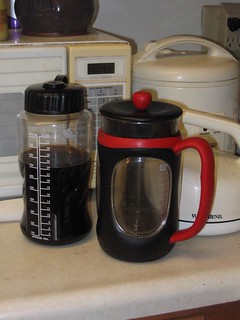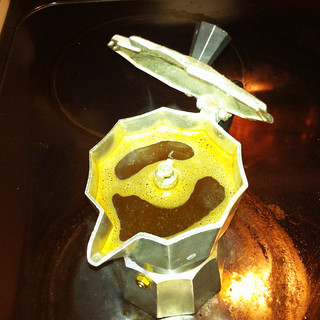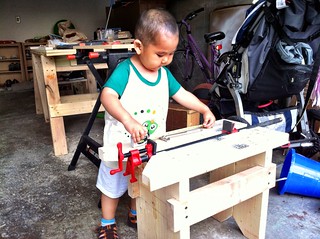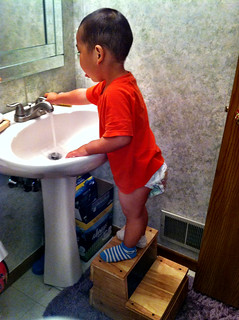
This was written by a couple of retired U.S. Marines who decided they wanted to learn to make good coffee. And write a book. It turns out to be a wonderful exploration into what electronic publishing can be, and a very good example of how to write about preparing food in general. And it has inspired me to try three forms of preparing coffee other than the kitchen coffee maker that is the workhorse of our household.
First the content. The meat of the book are discussions of various ways of preparing coffee: french press, pour over, Moka pot, Technivorm, cold brew, and Aeropress. For each of these, there is a light-hearted narrative on how they learned the method, and several ways of demonstrating it. A detailed set of instructions with pictures, a video, a discussion on how to scale up or down the recipe, and a short form of the recipe (like you would get on a recipe card). Around these are discussions on various aspects of coffee making, light roast vs. dark roast, grinding the beans, the golden ratio of beans to water, water temperature, all with a discussion on how the different choices interact with each other, the method of preparing coffee, and the taste. And a historical quote and jazz to go with it.
Around the discussions of preparation of coffee are two sets of stories. First is the entire culture around drinking coffee, including the market for coffee and the culture of coffee enthusiasts and connoisseurs (and they discuss the difference!) Second is their story. The nice part about this is that their backgrounds are entirely unpretentious, and their essential story is that they only got good because they were willing to be awful. Because the end goal is to enjoy drinking coffee. And that means trying and experimenting to what you want. Their goal in this book is to provide methods, but also teach you where you can change things, and what the effects will be.
Since we had our son, my wife and I have stagnated in tasting food in general. And I have gone from switching between the french press and kitchen coffee maker to using the coffee maker exclusively. In the week since I started reading this, I've decided to pay much more attention to making coffee. And even pulling up old notes on timing my french press, making cold brew coffee, and even the Moka Pot that I have but don't use. And I've enjoyed my coffee, and even the little changes from brew to brew to make it better. My wife has also enjoyed the results, even passing up on the milk she usually adds because the coffee maker tends to make things burnt. Now, the coffee maker is not going to be retired, it has advantages in ease of setup and cleanup, but every now and then I will be wanting to taste my coffee and I'll pull out other things.

I think the purpose of a good book about food is not a set of recipes or pretty pictures or passing on knowledge(although these are nice). I think the goal is to inspire you to enhance your enjoyment of eating and drinking. And this book does it in a way that uses the multi-media opportunities of the electronic book format to transmit this in many ways to engage the reader/listener. Oorah!
Note: This book is currently only available through the Apple iBookstore due to the fact it is the only format the currently allows for the embedding of multiple forms of media. The book website is http://www.perfectcoffeeathome.com/.
View all my reviews




